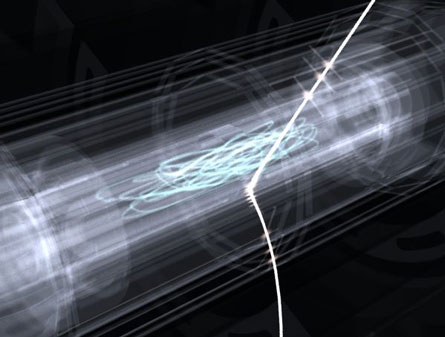Molecules/Matter & Energy
Antimatter in a bottle, superfluid swirls, ladybug poisons and more in this week's news
Better antimatter bottle

A team of scientists in Europe has trapped and held atoms of antihydrogen, hydrogen’s antimatter twin, for 1,000 seconds, almost 6,000 times longer than in previous experiments. With their improved antimatter bottle, reported online June 5 in Nature Physics, scientists at the European particle physics laboratory CERN near Geneva may soon be able to test several theories about antimatter. General relativity, for instance, predicts that gravity should have the same effect on antimatter as on matter. The standard model of particle physics suggests that the light given off by antihydrogen should be the same as that given off by hydrogen. —Devin Powell
Ladybug’s caustic chemistry
The tiny ladybird beetle Delphastus catalinae has a delicate name but a chemical arsenal more potent than many insect repellents. Insect larvae are often coated with hairs that contain oily, noxious liquids that deter predators. While investigating the larvae of ten insect species, scientists from Cornell University and Trinity College in Hartford, Conn., discovered the ladybird’s potent poisons, compounds called polyketides that contain ringed structures never before seen in nature. Since the species is used widely for controlling greenhouse pests such as whiteflies, the compounds should be easy to obtain for further study, the researchers report online June 6 in the Proceedings of the National Academy of Sciences.—Rachel Ehrenberg
Atom-thick optics
Computer simulations suggest that atom-thick layers of carbon called graphene, which can conduct electricity, could be great at guiding light as well. Electric fields applied to flakes of this material may create patches of different conductivities that are useful for making flat lenses and other optical components, researchers at the University of Pennsylvania in Philadelphia report. There’s reason to believe the results, published in the June 10 Science: A team of scientists at the University of California, Berkeley recently unveiled the world’s smallest optical modulator, which turns light on and off using graphene. —Devin Powell
Superfluid spaghetti untangled
Beautiful and baffling swirls that sometimes form in clouds of ultracold gas called fermionic superfluids are finally starting to make sense. After two years of number crunching on one of the most powerful supercomputers in the world, a team of scientists from China, Poland and the United States has figured out how to explain the spaghetti-like whirls. The analysis, reported in the June 10 Science, could be useful in explaining nuclear fission, the hearts of neutrons stars or the movement of electrons. —Devin Powell






